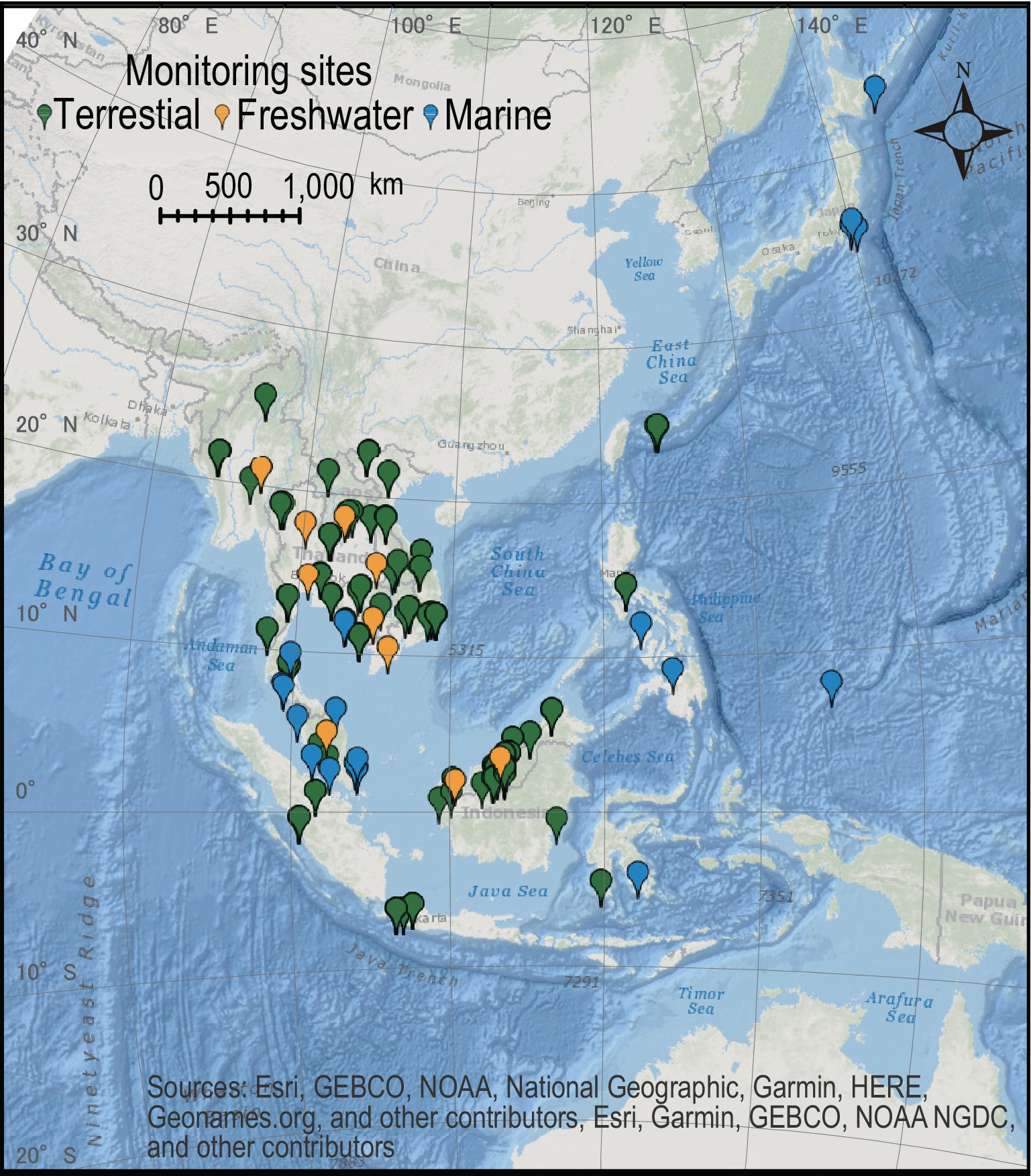The Asia Pacific BON, or AP-BON, was organized by the participants of the International Workshop for Networking Biodiversity Observation Activities in Asia Pacific Region held from July 21-22 2009, in Nagoya University, Japan. It was established as a regional network related to GEO BON, covering most countries of the Asia-Pacific region and covering all levels of biodiversity and ecosystems. As of 2017, some BONs are already operational at the national and sub-regional levels but there remains a need to organize more National BONs and organize their network, with the support of the GEO BON Secretariat and BON Development Working Group. Training courses were organized and are available through GBIF as funded by BIFA. There is however still a need to expand to other areas and parts of Asia and Pacific.
The AP BON has been working on the identification of threats to biodiversity, in particular, drivers of biodiversity loss, mangrove loss, wetland loss, and anthropogenic actions that hamper the achievement of Sustainable Development Goals. The AP BON makes the use of various technology for biodiversity monitoring at high resolution and providing large coverage such as Forest Crane, Drones and LIDAR that facilitate assessments in various ecosystems. Biodiversity databases have been established through various accessible platforms such as GBIF, ABCDNET, National Clearing House Mechanisms and the ASEAN Clearing House Mechanisms. In addition, related databases specific to certain taxa have been established.
More information can be found on the AP-BON website: http://www.esabii.biodic.go.jp/ap-bon/index.html


